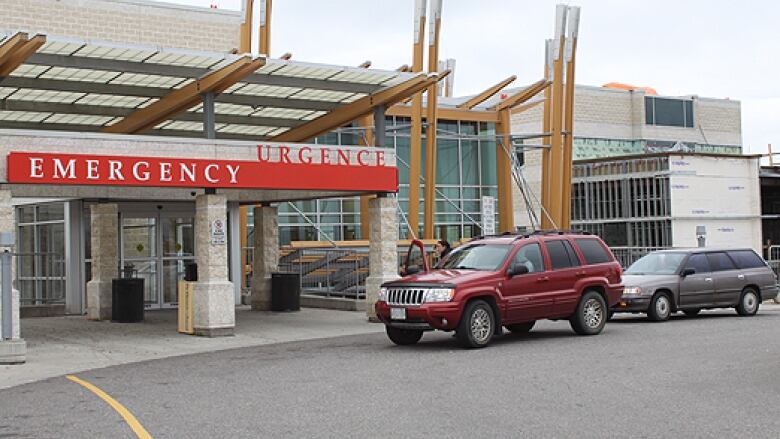Thunder Bay hospital plagued by 'Code Gridlock'

Despite openingadditional beds in other parts of Thunder Bay Regional Health Sciences Centre, gridlock remains a problem.
CBC News has obtained data from the hospitalpointing to a worsening problem with backlogs.
When all of the alcoves and extra spaces are used, there are about 425 beds available 50 more than the 375 beds for which the hospital was designed.
The data show Thunder Bay Regional has been is inCode Gridlock when there are no beds left to admit patients almost twice as many days as it was last year.

Executive vice president Rhonda Crocker Ellacott said the problem started back in January with 15 additional gridlock days and the trend has continued.
We had [an] additional seasonal surge that occurred over the winter term and, now in August we've seen an early surge of about eight additional gridlock days, she said. It is concerning.
Issue affects'entire hospital'
Crocker Ellacott said when gridlock is called, everybody is affected.
"Essentially it's the entire hospital, she said.
Gridlock means there are more than 10 inpatients in the emergency department, it means that we're moving patients into alcoves [and] family lounges to address the overcapacity challenges."
Crocker Ellacott said hospital visits generally increase in the fall and winter, causing some apprehension about what will happen in the months ahead.
The biggest issue contributing to the problem remains the dozens of patients who are awaiting care elsewhere, she noted, includinglong-term care facilities and home care.
Theyare known as "alternatelevel of care" [ALC] patients. As of Friday,roughly 60 ALCpatients were being cared for at the hospital, contributing to the backlog.












_(720p).jpg)


 OFFICIAL HD MUSIC VIDEO.jpg)
.jpg)



























































































